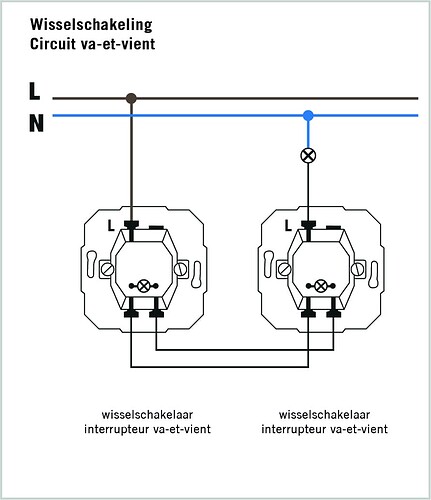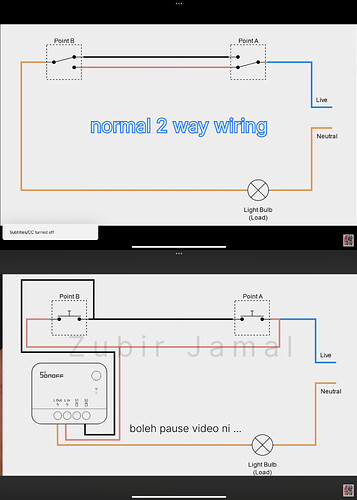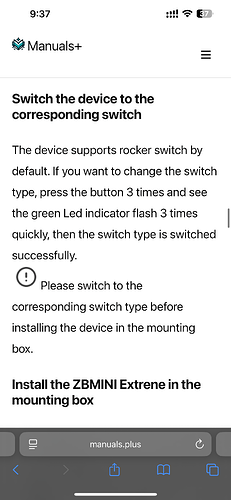I have done this and it is a little tricky. I did ALOT of research on it and carefully saved what I learned as it is very valuable! First image below is the before and after concept. I didn’t have a neutral to work with either (at either switch) so I had to use a Shelly 1L. Spend a few minutes studying both of these - especially the first one, which as you can see when either switch is changed position the light changes to the other state than what it was before (off to on or on to off) - that is how the circuit is completed - extremely clever (the circle with the X is the light fixture):
If you examine the above closely, you will notice the connectors for the switch on the left goes from “2 1” to “1 2”. That is NOT a mistake, it is just shown that way so the diagram does not have to show wires crossing over each other (just for readabilty). Note, do not put anything back into the wall until you have fully tested the whole setup to make things easier. Even with being very careful, I reversed the wires for the switch on the left as I thought the diagram was incorrect. That was no big issue as that switch just did not work properly, it was no harm done.
“Traveler” leads are the ones that go from one switch to another (and yes you will have those). Then, the next thing you need to figure out is which “traveler” leads are which - otherwise how do you know which to connect to which? I found a youtube video which works perfectly and shows you how to figure out which traveler wires are which. I had to watch this several times - and then re-watched it while actually going through the steps (thank god for the pause button!). It is a very clever way to do it however - but you should have a voltmeter (I am crazy I did it without a voltmeter by just connecting the wires to a light bulb!). (Notice, a volt meter is pretty cheap you can get one online for like $10 on amazon, you don’t need a fancy one like they have in the video, just one that lights up when there is juice. Later when I have bought shelly’s online they even threw into the box a very inepensive one that also can work as a screwdiver (picture below)!)
Anyway, although your voltage is higher than the 110 we have over here in the US, I believe the general concept/principle of how they are wired remains the same. (For some way over here if there are two switches and one light fisture they call them “three way switches”. I think that is because there are three wires going to each switch.)
Lastly, when you have everything set up, the shelly should have both switches set to “Edge” for them to properly operate as they used to - but also through the Shelly as well. Seamless and works perfectly for me!
BOOM!
Good luck, let us know how it goes!











